There is something magical about Petra, the ancient city carved into Jordan’s red cliffs. The scale of the buildings intertwined with nature would make contemporary architects envious. Petra is Jordan’s most famous attraction, but most people approach a visit incorrectly. They take the front entrance to reach the Treasury directly. Instead, we enter through the back entrance and follow the adventurous route: the so-called Petra Back Trail. We believe this is the best way to discover Petra because this way we save the best for last.
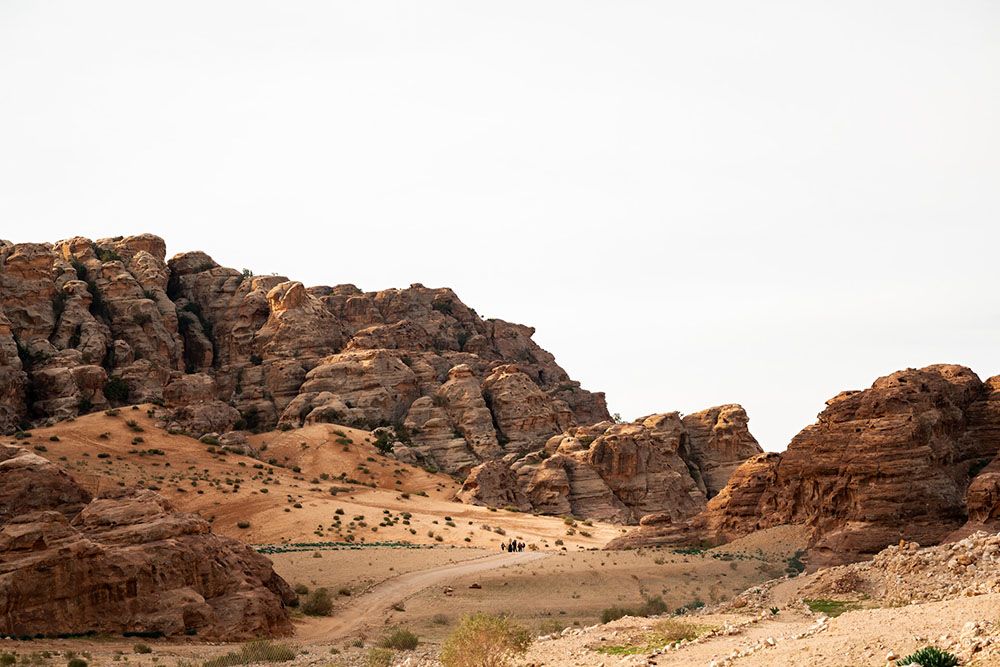
We stand at a small cabin with a barrier. Behind the barrier, the characteristic rock walls of Petra begin. To the left of the barrier, and actually still outside the park, a gate carved from rock is already visible. It is a taste of what awaits us. Our (certified) guide Ramzi explains that he needs to negotiate to see if he can enter without a local guide. He succeeds, and thus we begin our walk. We walk through the first rocks and immediately marvel at the landscape. The landscape opens up again, and we walk almost entirely alone through what can best be described as a moonscape. Lots of stone, a bit of grass here and there, and of course, the ubiquitous wild garlic in Jordan. It looks otherworldly.
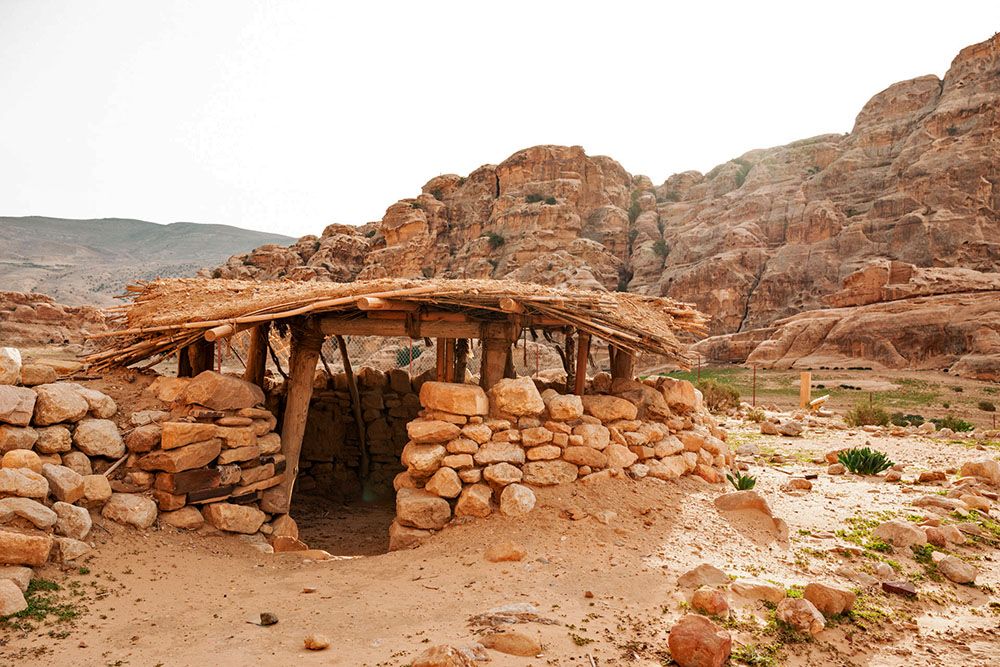
The long history of Petra
Petra is still inhabited by the Bedouins, and here and there we come across a donkey, some goats, or sheep. In the distance, we see small improvised tent camps. The Bedouins have traditionally been a nomadic people. Despite living here for some time, it was not they but the Nabateans who formed Petra into what it is today. About 2,800 years ago, they created the structures that still amaze us today. One of the first buildings we come across is a reconstructed hut at a site called Bayda. The excavations done here provide insight into life 9,000 years ago. Half buried and with a roof built on wooden poles of branches and clay. The walls are built of rocks. Interesting, but not really why we are here, of course.
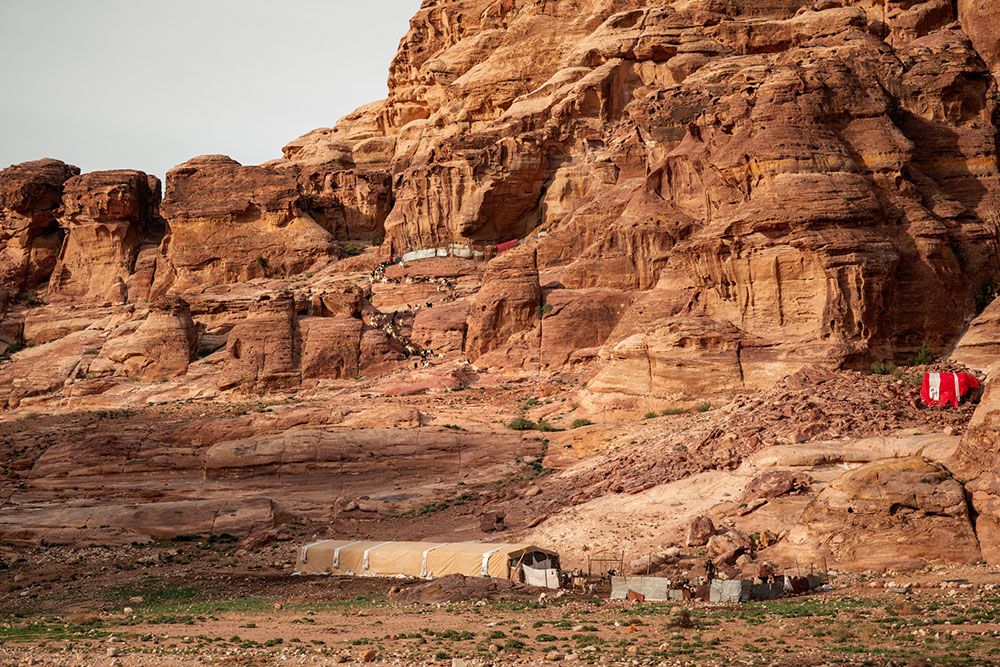
The Petra Back Trail as a prelude
We continue our way. The Petra Back Trail is about 14 kilometers long. That distance can be covered in a few hours. But if you want to take many photos like us, it will take a little longer. We recommend allowing at least half a day if you want to take a leisurely look at the highlights. There are also people who buy a three-day pass for Petra. Then you can study every stone, but that will be especially useful for archaeologists. The Petra Back Trail is easily accessible for anyone who is fit. The biggest challenge can be the heat. We are here in December and fortunately have ideal walking weather. After the first part, which is fairly flat, we steadily climb uphill. In the distance, we see the rocks that we will ultimately have to climb.
The Petra Back Trail is part of the Jordan Trail, the 675-kilometer trail that crosses Jordan. It is one of the most popular sections of the Jordan Trail. As we continue walking, we notice the surroundings changing from predominantly yellowish rock to a progressively redder environment. We steadily ascend paths carved out of the rocks, and the higher we climb, the more spectacular the view becomes. Along the way, Bedouins sell tea and trinkets, and in some places, steps have been carved into the soft stone.
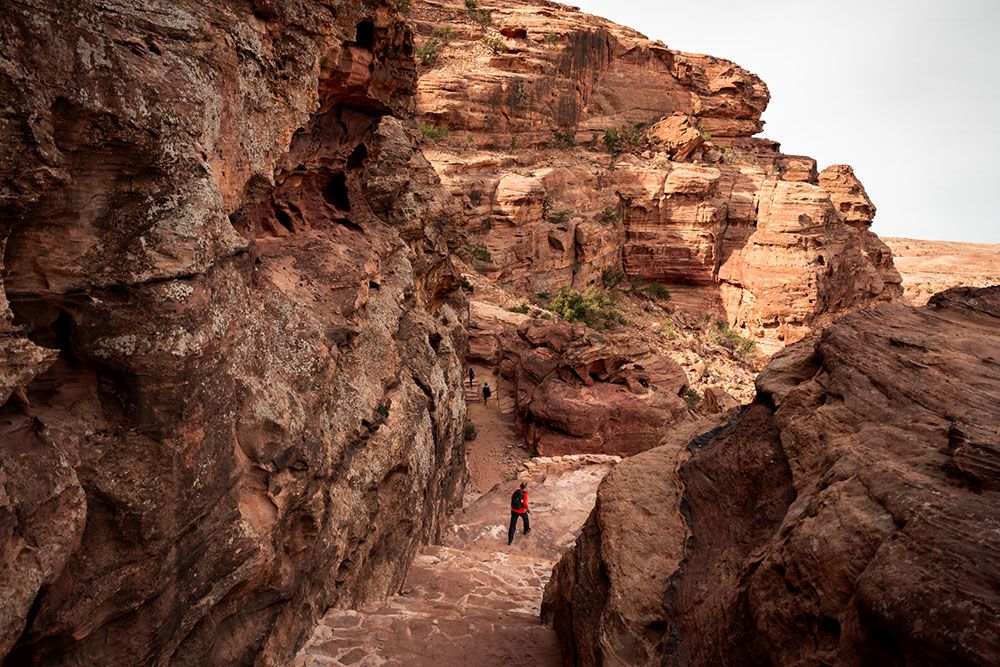
The real Petra begins here
After conquering the last rocks, we walk through a sea of onions and catch sight of a spire protruding above the rocks. It is the Monastery Ad Deir, the first part of the wonder of the world, Petra. A smooth, polished facade amidst the rugged rocks provides a striking contrast. The facade, 47 meters high, only becomes truly apparent in its height when we stand before it. It is impressive to contemplate the carving of such a facade from the rock face without modern machinery. The style of the facade is characteristic of the Nabateans, a blend of different architectural styles from the era it was constructed.
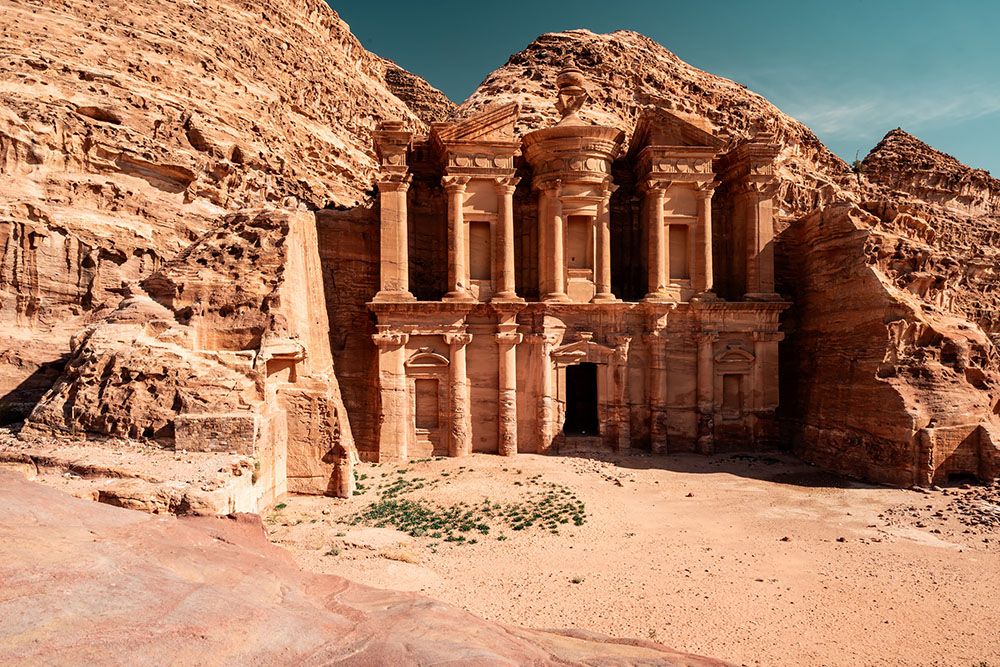
The true function of Ad Deir remains unclear, as is the case for many buildings in Petra. It may have been a tomb or used for religious events. Excavations in Petra continue to this day, aiming to shed more light on the functions of the various remains. As imposing as the exterior is, the interior is rather mundane, a bare room that was undoubtedly once beautifully adorned, but little of that beauty remains.
The Monastery is also where the hikers of the Petra Back Trail merge with those who entered through the main entrance. For the latter, this is their last sight. The natural beauty that we have been able to enjoy will remain hidden to them. They have already seen the best, and we still have that to look forward to. So, we continue on to discover the rest of Petra.
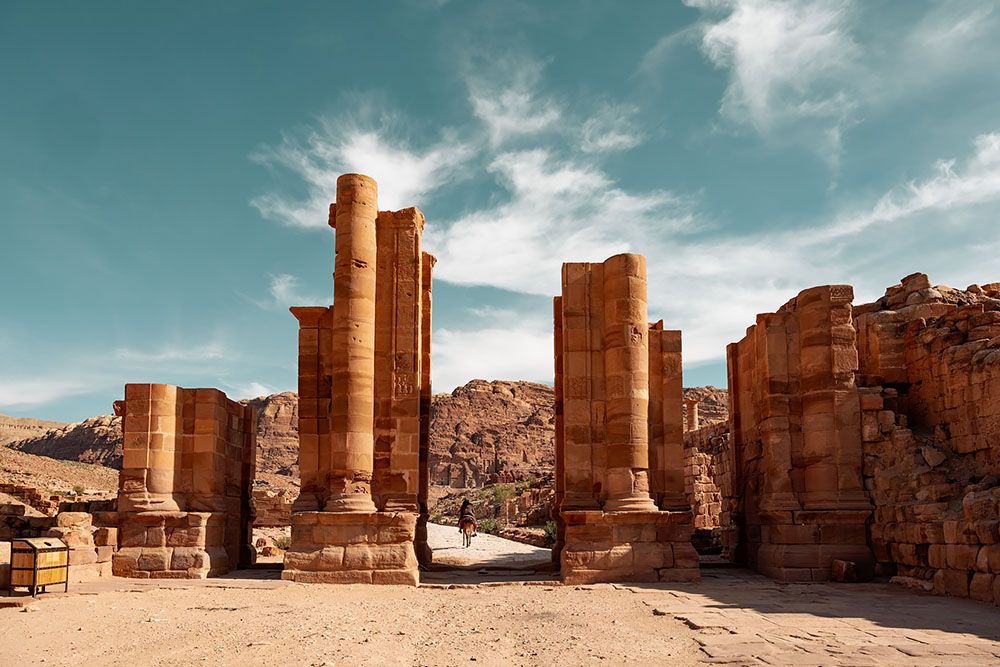
The city centre of Petra
The Monastery is somewhat on the outskirts, if you can describe it that way. We still have some climbs to do to reach the real city. Once within the “built-up area,” we get the feel of a real city. We walk past ruins of the great temple and see the ruins of the many buildings that formed the city. Approximately 25,000 people once lived here. The city flourished not only figuratively but also literally. Thanks to an innovative irrigation system, the city was an oasis in the desert. Throughout the city, remnants of irrigation canals and water basins can still be seen. This allowed plants to grow throughout the city, providing residents with drinking water and even a bathhouse. There were even floods in Petra, which is hard to imagine as we observe the dry landscape today.
We head towards the royal tombs via the Colonnaded Street. The enormous wall is visible from afar. As we approach, more details become visible. The burial chambers have been significantly eroded over time but still leave an impression. Unfortunately, it doesn’t fit into our schedule to climb up and view them up close. We walk through the street of facades, the upscale neighborhood before reaching the Treasury. This is where the wealthy and prominent citizens of Petra resided. These facades are also carved out of the rocks. As we proceed down the street, the walls draw closer together. We are almost at the highlight: the Treasury.
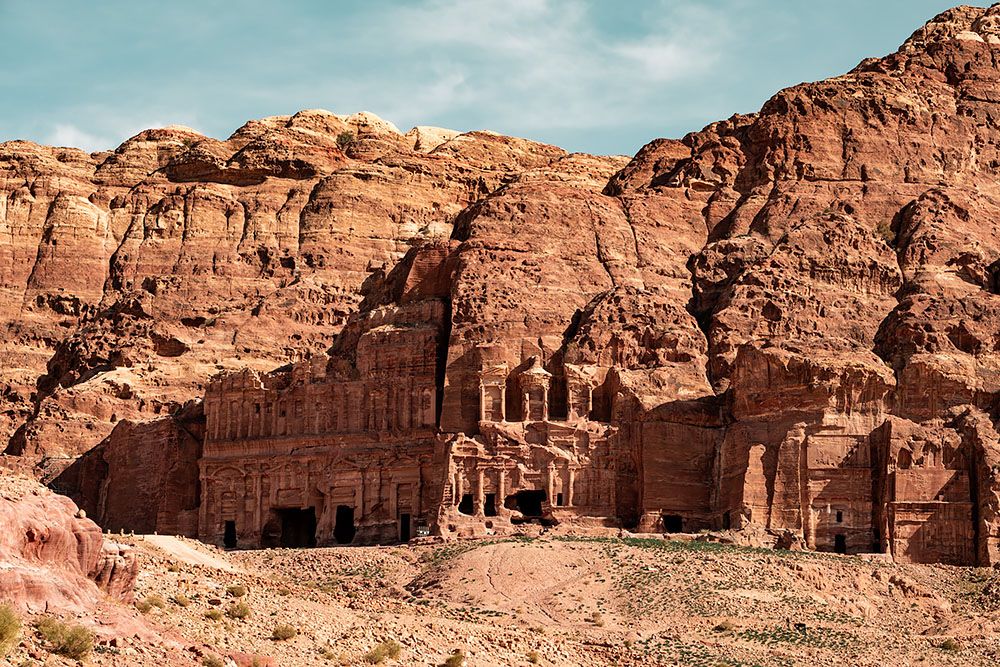
Al-Khazneh, the Treasury of Petra
We turn a corner, and there it is: Al-Khazneh, the Treasury. Admittedly, the first view from this angle is less spectacular than when you enter through the main entrance. Nevertheless, it remains remarkable. The facade is high, even higher than we had imagined. We walk a short distance towards the main entrance to also see the unveiling as most people do. The red rock walls that increasingly narrow and seem to overlap like louvers, eventually revealing the Treasury. We imagine that this is the revelation Johann Ludwig Burckhardt saw at the beginning of the 19th century. This Swiss is known as the (re)discoverer of Petra. He was the first Westerner to see and describe this wonder of the world. When he first laid eyes on the Treasury, it had been abandoned for about 600 years.
Al-Khazneh is the most photographed place in Jordan, and it is no surprise that Petra serves as a backdrop in many films. The most famous of these films is Indiana Jones and the Last Crusade, which brought Petra to the attention of the public. The blockbuster resulted in a significant increase in the number of tourists. However, do not expect the Holy Grail to be inside, as in Indiana Jones, or for a vast complex to be hidden behind the facade. The interior of the Treasury consists of only three rooms, all of which are bare. Al-Khazneh is best viewed from a distance.
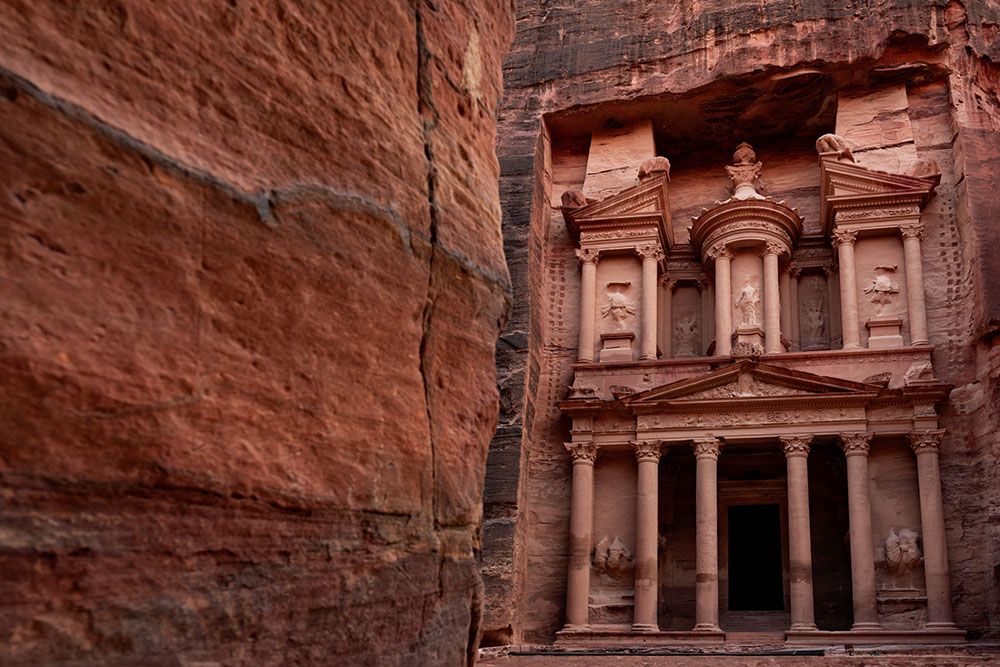
End of our hike on the Petra Back Trail
When we have seen enough, we negotiate a price with one of the golf cart drivers standing there. We let ourselves be driven for the last one and a half kilometers. Perhaps this is not the most adventurous way to conclude the Petra Back Trail, but it might be after all. The cart races between the red rock walls, and Al-Khazneh disappears from view after a bend. What remains is the interplay of the rock walls, which now gradually move further apart. It’s like rewinding a video. We see the landscape narrowing towards the Treasury, but in reverse. The adventurous Petra Back Trail is an absolute must-visit. In our opinion, this is the best way to visit Petra. As for the ride in the golf cart, well, you’ll have to judge that for yourself.
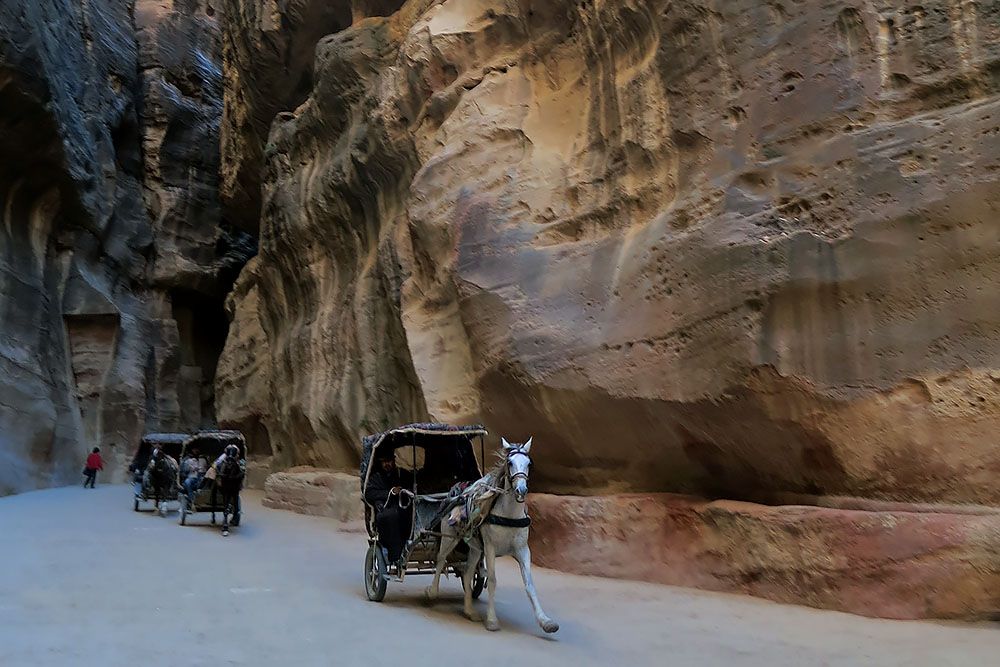
Answers to frequently asked questions about the Petra Back Trail
If you are already staying in Petra, it is best to take a taxi to the back entrance, but don't forget to buy your ticket at the main entrance. Even if you are traveling with the Jordan Pass, you must first collect an entrance ticket at the main entrance.
Whether you do the Petra Back Trail or take the main entrance, the prices are the same. 50 Jordanian dinar (approximately 65 euros) for one day, 55 JD for two days, and 60 JD for three days. You can also use the so-called Jordan Pass. This can be purchased from 70 JD and gives you access to Petra and many other attractions in Jordan. Definitely worth it if you are staying longer in Jordan.
Note: Even if you use the Jordan Pass, you must collect an entrance ticket at the main entrance.
Keep in mind that it can get very hot in Petra in the summer. So if you are there in the summer, it is wise to start the Petra Back Trail as early as possible. We were there in December and it was perfect hiking weather, but we also started early. This way you avoid the biggest crowds.
The walk is manageable but make sure to wear good shoes. The combination of sand and stone can make the ground slippery. You also walk along steep cliffs, so good grip is essential. Always take plenty of water and some food in case you need it. Depending on the season, it is best to wear layers of clothing. The morning can still be cool, but it warms up quickly.
At the invitation of the Jordan Tourism Board, we explored the Petra Back Trail. We compiled the content of the blog independently and objectively based on our own impressions.


